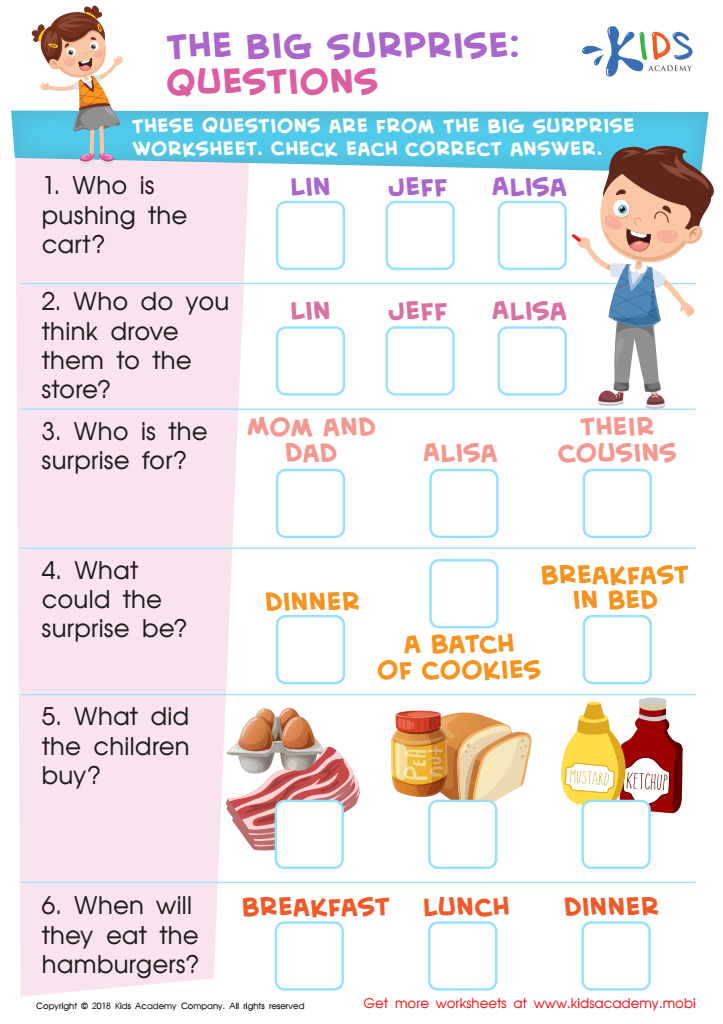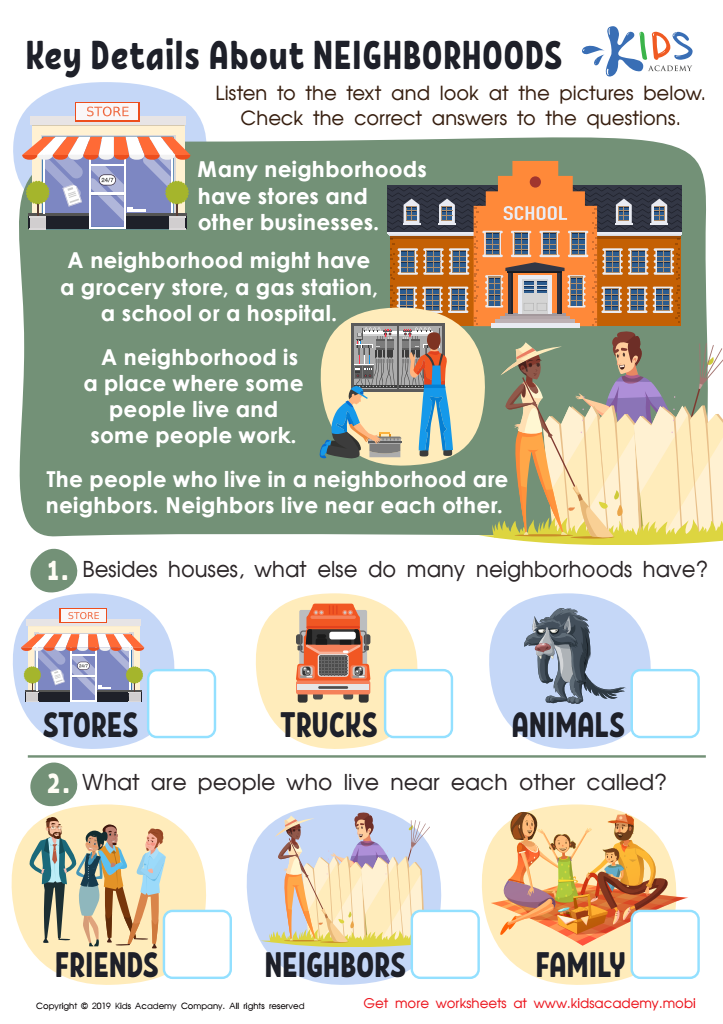Detail identification Normal Reading Worksheets for Ages 7-8
3 filtered results
-
From - To
Enhance your child's reading comprehension with our meticulously designed detail identification worksheets for ages 7-8. These engaging activities help young learners practice identifying key details and understanding the main ideas of texts. Perfect for reinforcing classroom lessons or for supplemental practice at home, our worksheets are specially crafted to develop critical reading skills in a fun, interactive way. Each worksheet is curated to challenge and stimulate young minds, ensuring they grasp crucial reading concepts. Boost their confidence and proficiency in reading with our expertly created resources on Kids Academy!


The Big Surprise: Questions Worksheet


Key Details from the Princess and the Pea Worksheet


Key Details Neighborhoods Worksheet
Parents and teachers play a crucial role in fostering detail identification during normal reading for children ages 7-8. This developmental stage is pivotal as children's cognitive and language skills are rapidly maturing. By focusing on detail identification, we help them enhance their comprehension skills. At this age, children transition from learning to read to reading to learn. Recognizing finer details in texts enables better understanding of the material, building a strong foundation for future academic success.
Moreover, detail identification promotes critical thinking and analytical skills. When children note specific information and nuances in stories or informational texts, they learn to infer meanings, draw conclusions, and make connections to their existing knowledge. This goes beyond simple recall; it builds a deeper, more robust grasp of content.
Additionally, attention to detail aids vocabulary growth and language proficiency. Identifying details within a reading passage often introduces new words and concepts, thus expanding a child’s vocabularical arsenal. Engaging with diverse details also nurtures curiosity and a love for reading, paving the way for lifelong learning.
In essence, emphasizing detail identification in reading enriches a child’s cognitive abilities, boosts academic performance, and cultivates an inquisitive mindset. Through concerted efforts from parents and teachers, children can better navigate the complexities of both academic texts and real-world information.
 Assign to My Students
Assign to My Students



.jpg)












